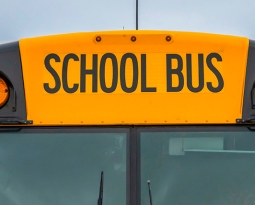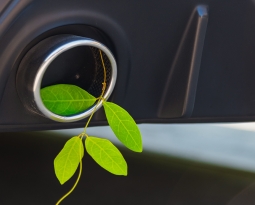Evolving Cheesewagons Into Yellow Limousines Of The Future
 If you were lucky enough in your former school years to have your parents drive you to school, you will not be able to close your eyes and remember the smell, the noise, or the freedom of no seat restraints allowing for seat sliding into any seat during the ‘cheese wagon’ ride to and from school. Way, way, way back in the 1900’s, the infamous school bus rides were not equipped with air condition which allowed you to open the small rectangle windows and breathe in the copious fossil fuels and hear the noise of the traffic competing with your ride home. While all this nostalgia is a great trip down memory lane, can we really say this wasn’t a factor in former generations declining physical and mental health. Researchers have found Gen x and y are showing poorer health and higher levels of depression and anxiety than previous generations.
If you were lucky enough in your former school years to have your parents drive you to school, you will not be able to close your eyes and remember the smell, the noise, or the freedom of no seat restraints allowing for seat sliding into any seat during the ‘cheese wagon’ ride to and from school. Way, way, way back in the 1900’s, the infamous school bus rides were not equipped with air condition which allowed you to open the small rectangle windows and breathe in the copious fossil fuels and hear the noise of the traffic competing with your ride home. While all this nostalgia is a great trip down memory lane, can we really say this wasn’t a factor in former generations declining physical and mental health. Researchers have found Gen x and y are showing poorer health and higher levels of depression and anxiety than previous generations.
Scientists are alarmed by the worsening health profiles of these two generations.
As we create a new sustainable future for Mother Earth by reducing emissions, we must also support the current inhabitant’s health and well-being. In October of this year, the Biden administration announced an estimated $1 billion in awards to replace older failing gas-fueled school buses to cleaner new electric versions. As a country, assimilating EV school buses will not only lower emissions but will benefit your community by saving money in the school districts and will remove potential learning and health hazards that are threatening the current generation of school children.
Atlanta Public Schools is replacing some of its diesel school buses with 25 electric buses, as part of the U.S. Environmental Protection Agency’s $5 billion Clean School Bus Program, part of the Bipartisan Infrastructure Law (Infrastructure Investment and Jobs Act) and calls for investment in low- and zero-emission school buses over the next five years.
APS is one of 389 school districts in the nation, and 15 in Georgia, selected for the first round of funding from the rebate program. The district will receive a $9.9 million grant to purchase the buses as well as install the necessary charging infrastructure.
Currently, only 2% of the estimated 60,000 US school buses are electric. The company FIRSTstudent is a leading the charge into electrifying our next generations school transportation in North America. Over the last three years, the company has managed to reduce their CO2 emissions by 63% and reduced nitrogen oxide emissions by 73%. What could this mean for Atlanta, you ask. With over 70% of the 108,000 students riding the bus in Atlanta school districts, it could mean a drastic difference in emissions but also boost students’ health and achievement scores.
A recent study done by Georgia State University, researchers found a 5% improvement in aerobic capacity. What this means in laymen terms is an improvement in student scores. With 10% of a single district retrofitting its fleet to low emission school buses, the district saw a .009 increase in English examination scores. If the entire fleet were implemented, the entire estimated test scores would result in a 10% increase.
With Atlanta reporting a school bus driver shortage earlier this year, lowering the cost of maintaining the fleet by using electric vehicles would free up money to increase support positions for our bus drivers. By selling excess electricity back to the V2G (Vehicle to Grid) during time of high demand, the electric buses can generate even more district revenue. Transitioning our school buses to lower emissions does not only decrease air pollution but also decreases the effects of noise pollution on the community. Check out the supporting article ‘The Wheels on the School Bus May Go Round and Round but How Much Sound Do They Make?’ for more information on noise pollution and electric buses.
Teresa Perkins is a climate change and sustainability journalist, who is creating research-based climate change content pertaining to sustainable energy at local, national, and global level for publication and distribution. She partners with non-profit organizations for innovative ideas and sustainability projects and connects global UN Climate Change reports to local initiatives.







